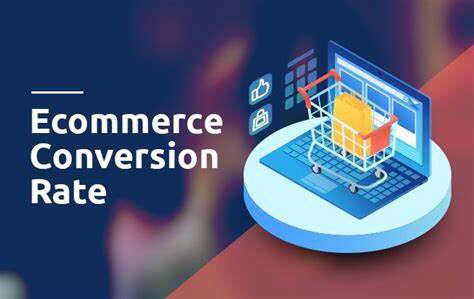In the highly competitive world of e-commerce, optimizing your website for better conversion rates is crucial for success. Converting visitors into customers requires a well-designed and user-friendly website that engages and convinces potential buyers to make a purchase. In this article, we will explore effective strategies to optimize your website for improved conversion rates and boost your e-commerce business.
Understand your target audience:
To optimize your website for better conversion rates, it’s essential to have a deep understanding of your target audience. Conduct thorough market research to identify the needs, preferences, and pain points of your potential customers. This knowledge will help you tailor your website’s design, content, and user experience to resonate with your target audience, enhancing their engagement and increasing the likelihood of conversions.
Simplify Website Navigation:
A cluttered and confusing website navigation can frustrate visitors and discourage them from exploring further. Simplify your website’s navigation by organizing it logically and providing clear labels for categories, subcategories, and pages. Incorporate a search bar that allows users to find specific products easily. Additionally, optimize your website for mobile devices to ensure seamless navigation across all devices, as mobile commerce continues to grow rapidly. For example, JazzCash is a mobile wallet and financial services platform in Pakistan, and it primarily focuses on providing ease and convenience to its users. While JazzCash is primarily accessed through mobile apps, it also offers a website interface to cater to users who prefer accessing their services through web browsers.
Streamline the Checkout Process:
A lengthy and complicated checkout process can lead to cart abandonment, resulting in lost sales opportunities. Streamline your checkout process by minimizing the number of steps required and eliminating unnecessary form fields. Offer guest checkout options to avoid forcing visitors into creating an account, but also provide incentives for account creation, such as exclusive discounts or personalized recommendations. Display trust symbols, such as security badges and payment options, to enhance customers’ confidence in your website’s security.
Enhance Website Speed and Performance:
Website speed and performance play a crucial role in user experience and conversion rates. Optimize your website’s loading speed by compressing images, leveraging browser caching, and minifying code. Invest in a reliable hosting provider to ensure your website can handle high traffic volumes without experiencing downtime. Regularly test your website’s performance and make necessary optimizations to provide a fast and seamless browsing experience for your visitors.
Create Compelling Product Pages:
Well-designed product pages can significantly impact conversion rates. Use high-quality product images and videos from different angles to showcase your products effectively. Write persuasive and detailed product descriptions that highlight key features, benefits, and unique selling points. Incorporate customer reviews and ratings to build trust and provide social proof. Implement clear and prominent call-to-action buttons, such as “Add to Cart” or “Buy Now,” to encourage immediate action.
Implement A/B Testing and Analytics:
To continually optimize your website for better conversion rates, utilize A/B testing and analytics. Test different variations of landing pages, checkout processes, and calls-to-action to identify the most effective strategies. Monitor website analytics to gain insights into user behavior, identify areas of improvement, and make data-driven decisions to enhance conversion rates.
In conclusion, optimizing your website for better conversion rates in e-commerce requires a holistic approach that considers the needs and preferences of your target audience. By understanding your customers, simplifying navigation, streamlining the checkout process, enhancing website speed, creating compelling product pages, and utilizing A/B testing and analytics, you can significantly increase conversions and propel your e-commerce business to new heights.




